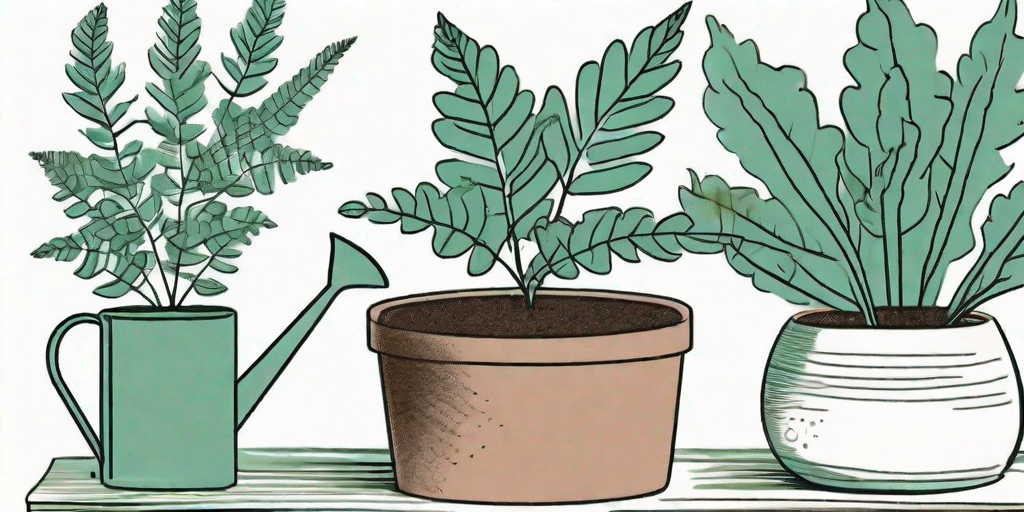
If you've been nurturing your fern with the same dedication you'd give to a newborn kitten, only to find it turning a sickly shade of brown, don't panic! This guide is here to help you diagnose and treat your ailing plant, and hopefully restore it to its lush, green glory.
The Symptoms: How to Spot a Sick Fern
Before we dive into the nitty-gritty of fern care, let's first identify the signs of a struggling fern. After all, you can't administer the right treatment without a proper diagnosis!
So, what does a sick fern look like? The most obvious sign is, of course, browning leaves. But there's more to it than that. Let's break it down.
Browning Leaves
When your fern's leaves start to turn brown, it's a clear sign that something's amiss. But don't assume the worst just yet! Browning leaves can indicate a variety of issues, from overwatering to a lack of humidity.
Look closely at the leaves. Are they uniformly brown, or are there spots or patches of brown? Are the brown leaves crispy to the touch or soft and wilted? These details can help you pinpoint the problem.
Yellowing Leaves
Yellowing leaves are another common symptom of a sick fern. While not as alarming as browning leaves, they're still a sign that your fern isn't feeling its best.
Like browning leaves, yellowing leaves can be caused by a variety of factors. Overwatering, underwatering, and nutrient deficiencies can all lead to yellow leaves.
The Causes: What's Making Your Fern Sick
Now that we've identified the symptoms, let's move on to the potential causes. There are many factors that can contribute to a fern's ill health, but we'll focus on the most common ones here.
Remember, every fern is unique, and what works for one may not work for another. It's all about finding the right balance for your particular plant.
Overwatering
Yes, ferns love water. But too much of a good thing can be harmful. Overwatering is one of the most common causes of browning and yellowing leaves in ferns.
When a fern is overwatered, its roots can become waterlogged and oxygen-starved, leading to root rot. This can cause the leaves to turn brown or yellow and eventually fall off.
Underwatering
On the flip side, not giving your fern enough water can also lead to problems. Ferns are thirsty plants, and they need a steady supply of water to stay healthy.
Underwatered ferns can become dehydrated, causing their leaves to turn brown and crispy. If left untreated, the fern may eventually die.
Lack of Humidity
Ferns are native to tropical and subtropical regions, which means they thrive in humid environments. If the air in your home is too dry, your fern may start to suffer.
Dry air can cause a fern's leaves to dry out and turn brown. It can also make the plant more susceptible to pests and diseases.
The Treatment: How to Revive Your Fern
Now that we've covered the symptoms and causes, let's get to the good stuff: how to save your precious fern. Here are some steps you can take to nurse your fern back to health.
Remember, patience is key. It may take some time for your fern to recover, but with consistent care, it can bounce back.
Adjust Your Watering Routine
If you suspect that overwatering or underwatering is the issue, adjusting your watering routine can make a big difference. As a general rule, ferns prefer to be kept consistently moist, but not waterlogged.
Try watering your fern thoroughly, then allowing the top inch of soil to dry out before watering again. This can help prevent overwatering while still providing your fern with the moisture it needs.
Boost the Humidity
If dry air is the problem, there are several ways you can increase the humidity around your fern. One simple method is to place a tray of water near your fern. As the water evaporates, it will increase the humidity in the air.
You can also mist your fern with water regularly, or even consider getting a humidifier.
Prevention: How to Keep Your Fern Healthy
Prevention is always better than cure, especially when it comes to plant care. Here are some tips to keep your fern healthy and prevent future issues.
Choose the Right Location
Ferns prefer indirect light and high humidity, so choose a location that meets these needs. A bathroom or kitchen can be a great spot for a fern, as these rooms tend to be more humid than others.
Keep your fern away from direct sunlight, as this can scorch the leaves and cause them to turn brown.
Feed Your Fern
Ferns need nutrients to grow and stay healthy. Feed your fern with a balanced houseplant fertilizer every month during the growing season (spring and summer).
Be sure to follow the package instructions, as over-fertilizing can cause more harm than good.
FAQs
Why is my fern turning brown?
There are several reasons why your fern might be turning brown. Overwatering, underwatering, lack of humidity, and nutrient deficiencies are some of the most common causes.
How can I increase the humidity for my fern?
You can increase the humidity for your fern by placing a tray of water near it, misting it with water regularly, or using a humidifier.
How often should I water my fern?
As a general rule, ferns prefer to be kept consistently moist. Water your fern thoroughly, then allow the top inch of soil to dry out before watering again.
What kind of light does a fern need?
Ferns prefer indirect light. Direct sunlight can scorch the leaves and cause them to turn brown.
So there you have it, folks! A comprehensive guide to diagnosing, treating, and preventing brown leaves in ferns. Remember, every fern is unique, and it may take some trial and error to find the right care routine for your plant. But with patience and persistence, you can help your fern thrive. Happy gardening!















